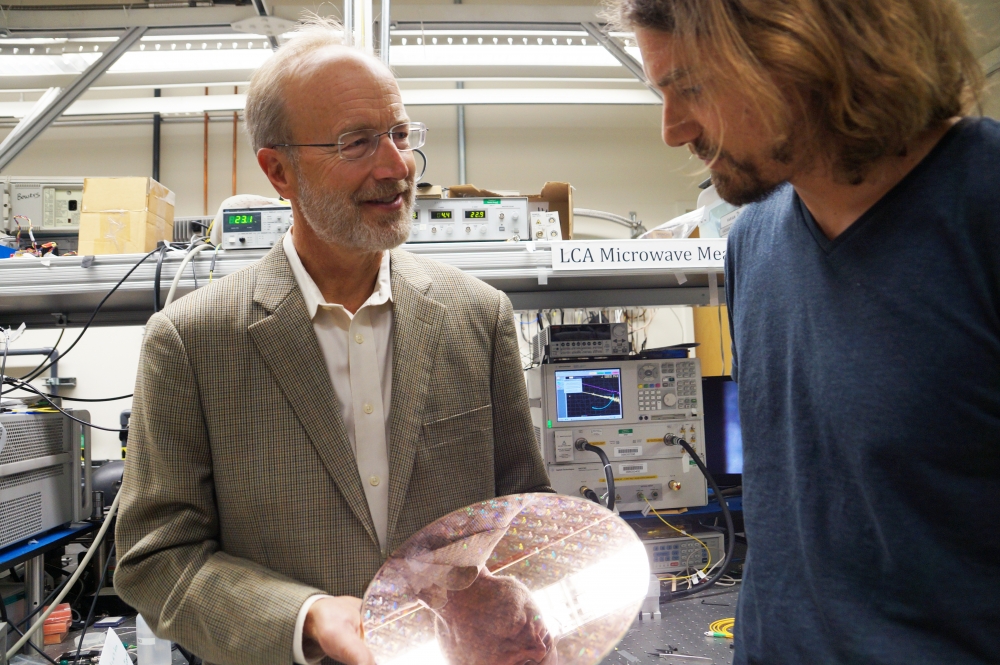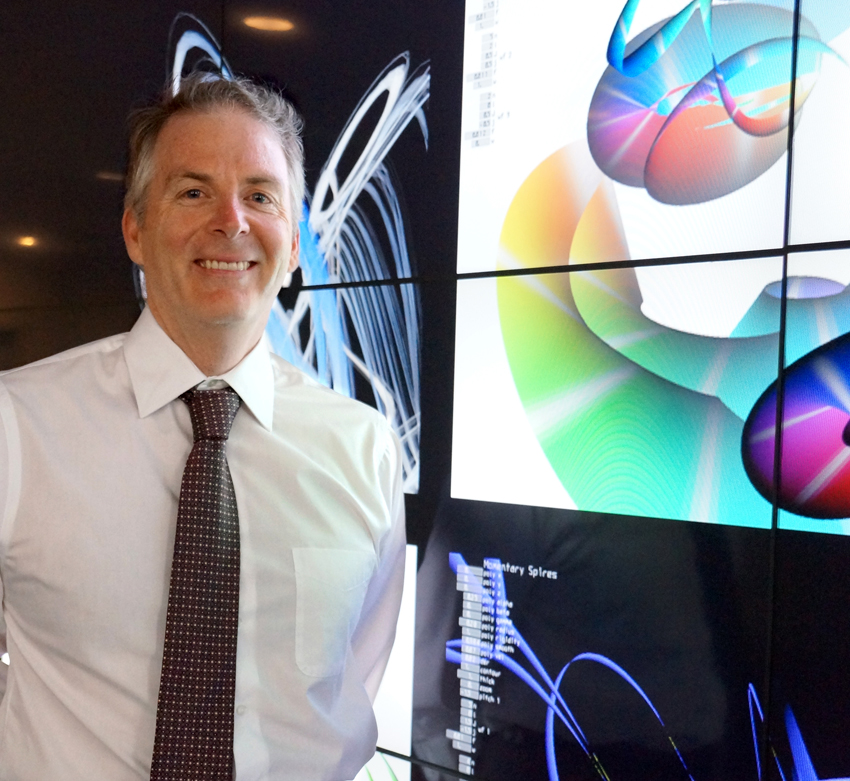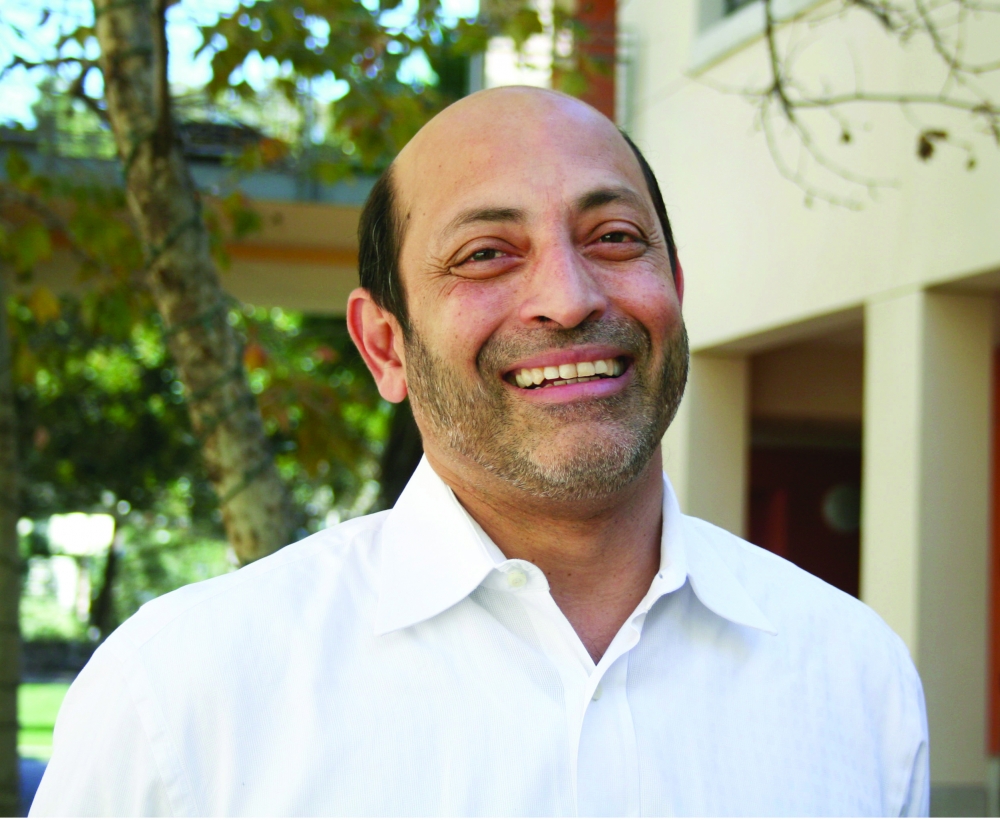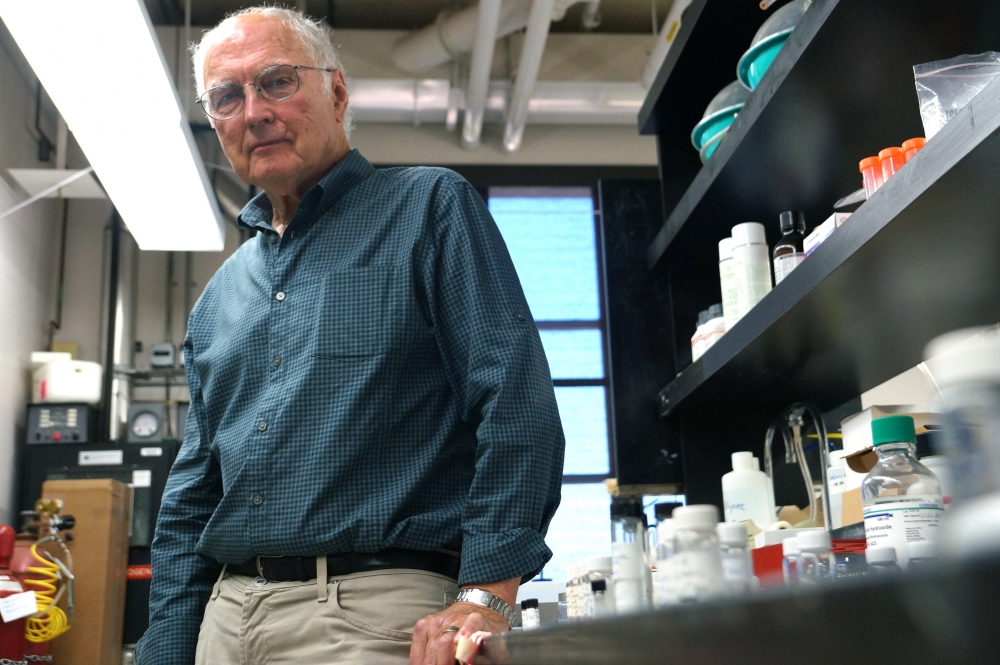Academy of Inventors Honors Faculty Members
Four UC Santa Barbara faculty members have been elected to the National Academy of Inventors (NAI) for 2015. Recognized for their “highly prolific spirit of invention,” professors John Bowers, Craig Hawker, Umesh Mishra and Galen Stucky are among the newest fellows elected by the organization.
They join 164 other new NAI members for 2015, bringing the total of NAI fellows to 582, representing more than 190 research universities and governmental and non-profit research institutions.
“Each of these prestigious members of our faculty have made discoveries and then translated them into applications that change the world, from energy efficiency in electronics, to innovative polymers, to life-saving biomedical technology,” commented Rod Alferness, dean of the UCSB College of Engineering. “Society is benefiting from their intellectual contributions right now, and their work propels us into a bright future. We are tremendously proud of the recognition by NAI.”
John Bowers
An expert in photonics and optoelectronics, electrical and computer engineering professor John Bowers’s research focuses on the use of light to transmit data. By integrating electronic and photonic elements on the same silicon-based chip, the next generations of computers and telecommunications devices will be able to receive and transmit data at much faster speeds and with a fraction of the energy that is being used today.
Bowers is the founding director of the UCSB Institute for Energy Efficiency and a cofounder of the campus’s Technology Management Program, as well as the West Coast lead for the federally funded American Institute for Manufacturing of Photonics. A veteran of industry who worked at Bell Laboratories and Honeywell before joining UCSB in 1987, Bowers has published 466 journal papers, received 54 patents and consults with numerous photonics manufacturing companies.
“It is very gratifying when new products or new companies come out of good research,” Bowers said of the “creative research” required to bring forth advanced technologies and bring them to the market.
Bowers is a member of the National Academy of Engineering, a fellow of the Institute of Electrical and Electronics Engineers, Optical Society of America (OSA) and the American Physical Society, and a recipient of the OSA Holonyak Prize.
Craig Hawker
Working on the molecular level to study and control the properties of materials, Craig Hawker conducts research involving the design and synthesis of macromolecular structures and polymeric thin films, and the controlled assembly of nanoparticles — studies that lend themselves to applications in a wide variety of fields, from more efficient energy and data storage to improved semiconductor technology and advanced biotechnology.
A professor of materials and also of chemistry and biochemistry, Hawker holds the Ruth and Alan J. Heeger Chair in Interdisciplinary Science at UCSB. He is the director of the Materials Research Laboratory on campus, as well as the California Nanosystems Institute and the Dow Materials Institute. He came to UCSB in 2004 after 11 years as a research staff member at the IBM Almaden Research Center in San Jose.
“I am thrilled to accept this honor on behalf of the very talented students and colleagues that I have had the pleasure to work with during my career,” said Hawker. “I am very proud of the important inventions and innovative products that have arisen from our collaborations with small and large companies alike.”
The author or co-author of more than 400 publications and 50 patents, Hawker is the recipient of numerous honors and awards, including election to Britain’s Royal Society in 2010, the Centenary Prize from the Royal Society of Chemistry in 2013, and the American Chemical Society’s national award in 2012. Hawker also has been named a Highly Cited Researcher in 2015 by the mass media company Thomson Reuters and is a member of the American Association for the Advancement of Science.
Umesh Mishra
A whopping $40 billion in unused energy is wasted in the United States annually, and it’s not coming from the more obvious places in our energy infrastructure. Rather, the energy dissipation happens at the point of conversion, with the adaptors in our various devices changing the voltage that arrives through power outlets to be compatible with the smaller requirements of our machines, and losing the rest as heat.
Electrical and computer engineering professor Umesh Mishra has made it his mission to put an end to that waste of energy and money, and in doing so, help to update the country’s outdated and inefficient energy infrastructure. His research expertise is in gallium nitride (GaN) electronics, utilizing the fine control offered by the wide-bandgap semiconductor material over the flow of electrons, enabling more efficient power distribution in various industrial and commercial systems, as well as opening the way to better integration of renewable energy sources.
“The impact of gallium nitride-based electronics is to radically improve the efficiency for radio-frequency power generation used in wireless base stations and also all forms of power conversion including data servers, solar inverters and electric and hybrid car motor drives,” said Mishra, who is “honored” to be inducted into NAI. “This is an important step in the journey toward ultra-low wasted energy in these functions, which reduces cost, mitigates environmental impact and takes the shackles off system design while creating jobs.”
Mishra, who joined UCSB in 1990, is a member of the campus’s Solid State Lighting & Energy Electronics Center and holds the Donald W. Whittier Chair in Electrical Engineering. He is also leading research efforts as part of PowerAmerica, a federally funded national research and manufacturing consortium established to accelerate research and development of GaN and other wide-bandgap semiconductor technologies .
Galen Stucky
When Galen Stucky, professor of materials and of chemistry and biochemistry, began his research into mesostructured materials — materials that contain pores or other heterostructured domains with diameters between 2 and 50 nanometers — the mesoscale was uncharted territory. Since the early 1990s, when Stucky initiated his research, the field has grown, leading to investigations into areas such as energy efficiency, optics and bio-inspired technologies. His research — and 781 publications — have made him one of the most influential authorities in the field, earning him Thomson Reuters’ Citation Laureate recognition in 2014. Stucky holds 34 patents.
One notable application of his work, for which he won the Advanced Technology Applications for Combat Casualty Care Award from the U.S. Department of Defense in 2008, was the development of a hemostatic therapeutic agent that not only quickly stanches the free flow of blood from a deep wound but also prevents infection. The kaolin-based hemostatic agent is still the standard for all branches of the U.S. military, and is globally used by civilian healthcare professionals and law enforcement agents.
“The mesoscale heterostructure materials synthesis and processing platform that was developed at UCSB has opened up opportunities for a variety of commercial applications, ranging from large molecule separations to the use of mesoporous silica for assembly of large numbers of ultra-small 3-D transistors on a single chip,” said Stucky. He calls himself “fortunate in having the opportunity to work at UCSB, with its project-oriented tradition exemplified by my many colleagues who have been both academic and industrial professional scientists and engineers.”
A member of UCSB’s interdepartmental Biomolecular Science and Engineering program, Stucky was appointed the E. Khashoggi Industries, LLC Professor in Letters and Science in 2006. He is a fellow of the American Academy of Arts and Sciences and the American Chemical Society. He was elected to the U.S. National Academy of Sciences in 2013 and was awarded the 2014 Prince of Asturias Award for Technical and Scientific Research.
The new NAI fellows will be inducted on April 15, 2016, as part of the Fifth Annual Conference of the National Academy of Inventors at the United States Patent and Trademark Office (USPTO) in Alexandria, Va. USPTO Deputy Commissioner for Patents, Andrew Hirshfeld, will provide the keynote address for the induction ceremony. Fellows will be presented with a special trophy, medal and rosette pin in honor of their outstanding accomplishments.
The 2015 NAI fellows will be recognized with a full page announcement in The Chronicle of Higher Education Jan. 22, 2016 issue, and in upcoming issues of Inventors Digest and Technology and Innovation.







